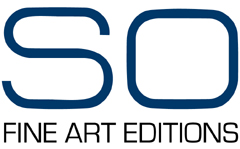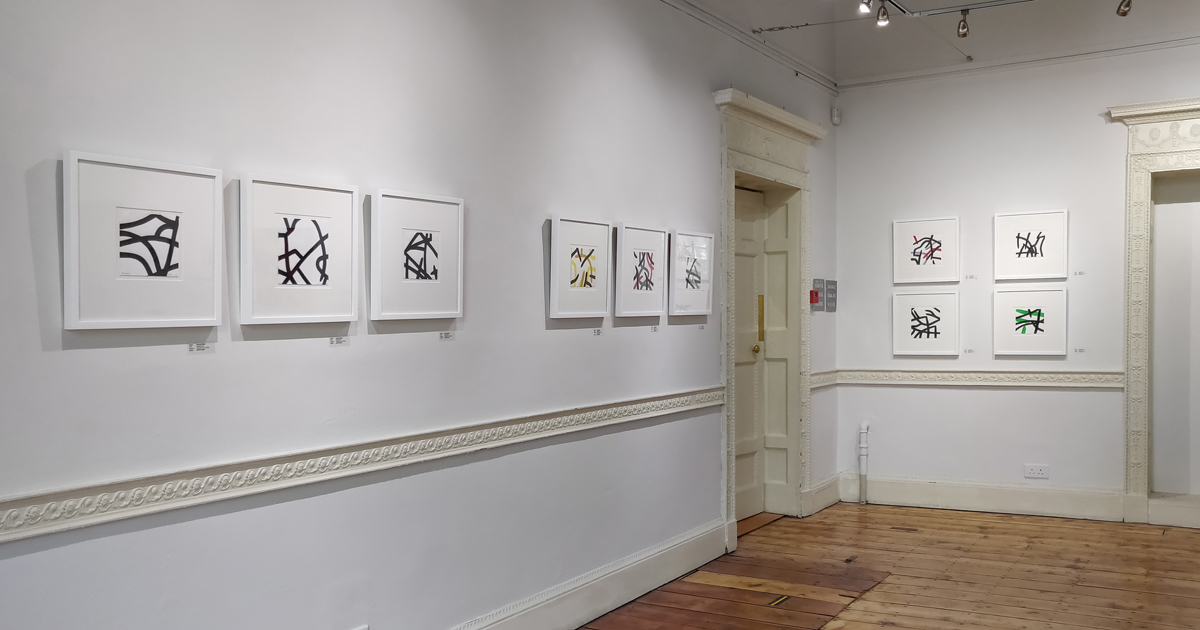Insights into the exhibition by Samuel Walsh
Samuel Walsh writing about his exhibition ‘Segments’.
5 June – 26 June, 2021
“Good drawing is, (as we have seen,) an abstract of natural facts; you cannot represent all that you would, but must continually be falling short, whether you will or no, of the force, or quantity, of Nature” – The Elements of Drawing, John Ruskin (1819-1900)
My small Segment drawings, as their title suggests, are based on sections of larger drawings. Drawing is something I have always done, even before painting and, small drawings have always been done by me from or before larger drawings. *Not always but most times.
I have been making the Segment drawings since at least 2008 but I have always made small drawings. Their scale should not diminish their discipline value. Sometimes a small work can have an intensity that a larger work does not or cannot have. Nor does the larger drawing require that kind of intensity for it relies on other factors such as space and form to relay its presence.
The paper that these small drawings are made from comes from the tear-offs from my personal decision to make square drawings. Most commercial artist’s paper comes as a rectangle and to make the square for the larger drawing you must tear off a section (the technical term is ‘crack’) and I subsequently divide the torn off section into equal ‘squarish’ parts. So, these small sections of paper are not only sections of the drawings but sections of the original paper sheet. The drawings are made with a brush soaked in encre de chine (Chinese ink as opposed to Indian ink although they are essentially the same) and the drawing requires three linear coats to establish a finish. They are as much work as larger drawings and occasionally more. I now also use a range of liquid mediums including liquid acrylic paint or Plaka, a water-based gouache; gouache, and especially acrylic gouache particularly when an additional colour is introduced. This means that in the latter context when one colour crosses another colour it does not ‘pull’ colour from the one underneath as the acrylic hardens the surface. Very technical! This involves two coats of paint if not more and is equally demanding.
What you see before you are a selection from the ongoing making of these drawings determined by the space available to me in SO Fine Art Edition’s Gallery because I continue to make Segment drawings and have now reached 163 **numerically (June 2020). Many are now scattered on the walls of homes and galleries throughout the world.
Also included are two of the large drawings and a painting. This will give you some idea as to where the Segments come from and in the case of the painting where a part or the whole of the drawing might end up.
I have been a professional artist since 1977 having made the decision to devote myself for the rest of my life to the strange historical and cultural pursuit of making art. (I have occasionally been distracted by other ends but the line of thought has stayed steady throughout.) The emphasis here is on the word ’pursuit’ as it implies an elusiveness and unattainability I welcome. I don’t want to make the ultimate work of art as that would automatically mean the end to the pursuit and the end of the necessity to get up every day and go into my studio and pursue the idea of art.
I am convinced that every aspect of upbringing, culture, travels, experience (both empirical and rational), education, and personal associations and relationships play a part in how an artist makes their art. This is not always apparent in the work but its there if only in a subliminal way. As I have said many times before, I do not always represent the world but I live in it. I hope, as well, that I am still now asking the difficult questions, translating ideas into two-dimensional form and distilling thoughts into concrete examples. I expect my audience to be as challenged as I was in the making of my work. There is nothing worse than passivity in the face of art and equally worse, art that is passive in meeting an audience.
I will continue to undertake this daily activity until I can do it no more.
Samuel Walsh
Cloonlara, Co Clare
September 2020
* Ironically the larger drawings come from a small notebook of thumbnail sketches made in situ, the scale worked in the opposite direction. These thumbnail sketches could be of anything that takes my eye; a painting in a museum, a view of a cityscape, a landscape, a concert, a paragraph in a book, etc. Changing the scale does not remove their origins just the emphasis.
** This number might change by the time the exhibition takes place.

